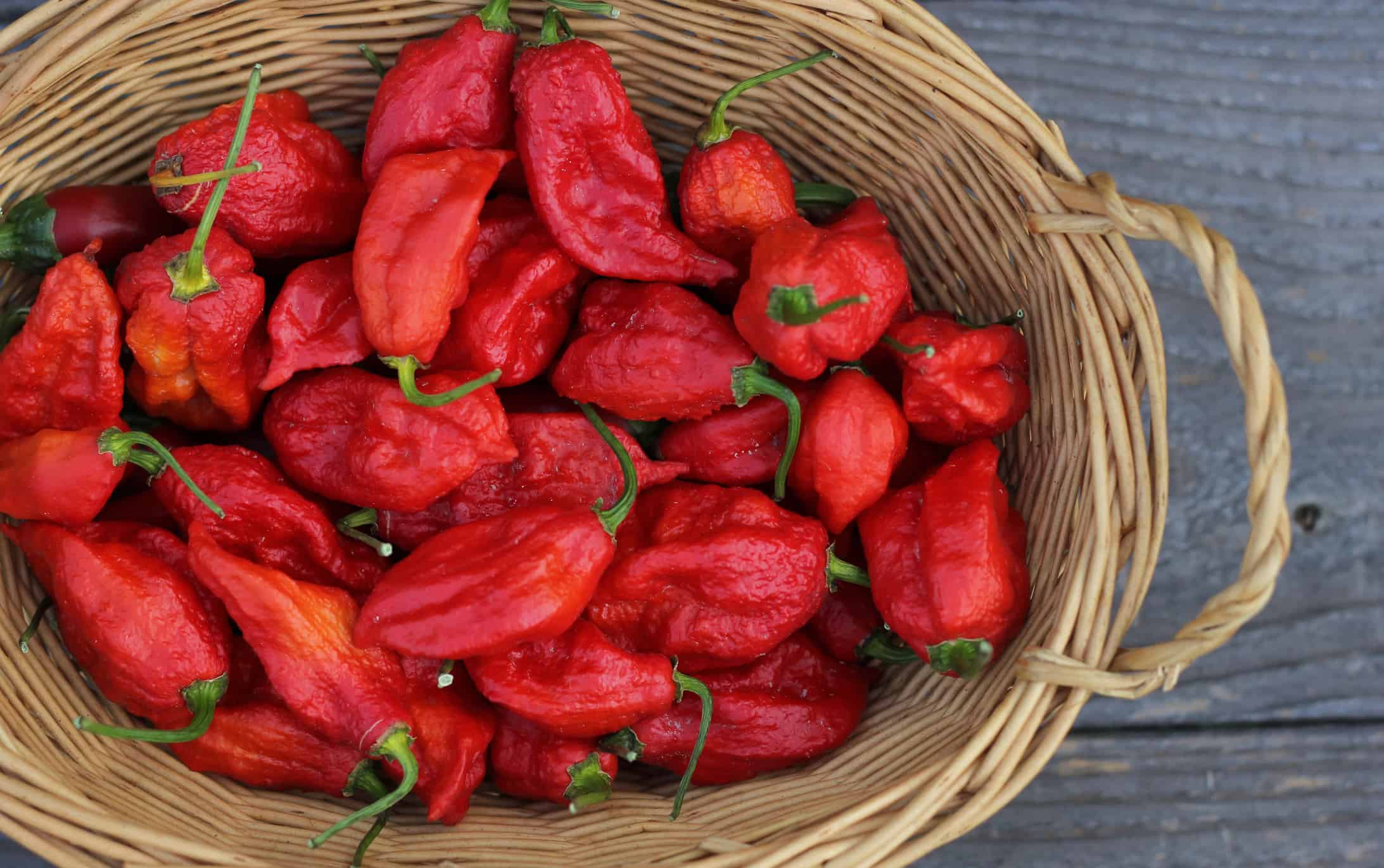Venturing into the world of chilis? If you’ve been binging episodes of Hot Ones or maybe just perusing the hot sauce aisle for a new accompaniment to your eggs, maybe you’re curious about the differences between ghost peppers and Carolina reapers.
When it comes down to it, both are going to light your mouth on fire. According to the Scoville Heat Unit scale, both rank so high that the differences between them are pretty negligible. Only the most discerning, heat-proof palette will be able to pick apart the nuances.
But nevertheless, you want to know what sets them apart! So, read on and see which pepper is hotter and the key differences between the two.
- The must-have convenient reference guide for every home cook!
- Includes more than 8,000 substitutions for ingredients, cookware, and techniques.
- Save time and money on by avoiding trips to grab that "missing" ingredient you don't really need.
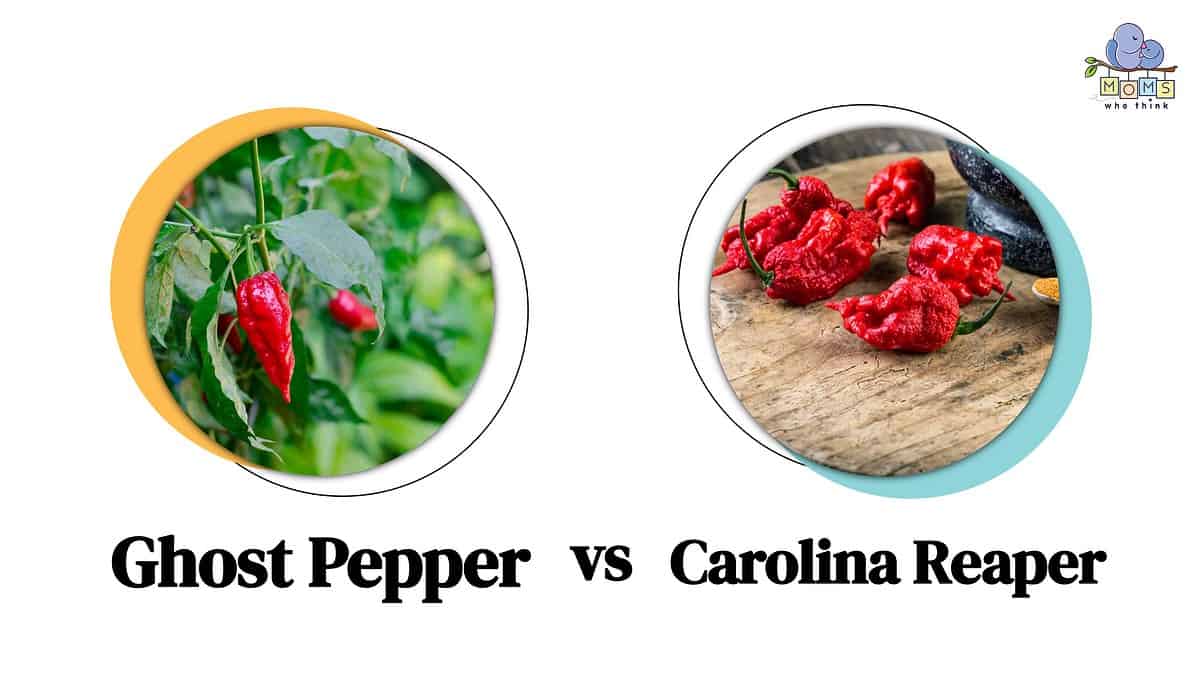
Ghost Pepper vs. Carolina Reaper: What Are They?
Both peppers are chilis that belong to the nightshade family. Many chili peppers originated in South America but were brought along trade routes to Europe. Thus, they eventually made their way to India, Asia, Africa, and the Caribbean Islands. Chili peppers are a major staple in various cuisines around the world even though the experience of eating them can inflict pain on one’s taste buds!
Capsaicin is what makes peppers, especially chili peppers, so spicy. It is quite literally a naturally occurring chemical irritant that creates a burning sensation with any tissue it comes into contact with. That’s why sometimes really spicy peppers will burn your sensitive skin or your eyes if you touch them after chopping them. Peppers evolved to have this element to protect themselves from animal consumption. Unfortunately for peppers, that strategy backfired.
Ghost Peppers
So, ghost peppers. Where exactly did they originate? Ghost peppers are technically called bhüt jolokia, which literally translates to Bhutan pepper. There is another word in Assamese, bhut, which means “ghost” and this mistranslation is what led to the name “ghost pepper.” Assam is located in Northeast India, which is where ghost peppers were originally cultivated.
The ghost pepper is a hybrid of the Capsicum chinense species of chili pepper, which includes other less spicy cousins such as habaneros. To give you an idea of how spicy ghost peppers are, it has about 1 million Scoville Heat Units (SHU), which is the rating system we use to measure spiciness. Comparatively, habaneros have about 350,000 SHU. That means ghost peppers are about three times as spicy as habaneros. If you’ve ever struggled to eat habaneros, you’re probably sweating just thinking about how painful a ghost pepper would be to eat. Indeed, they were ranked the hottest pepper in the world by 2007.
They remained the hottest until 2013 when Guinness declared the Carolina reaper the hottest pepper in the world.
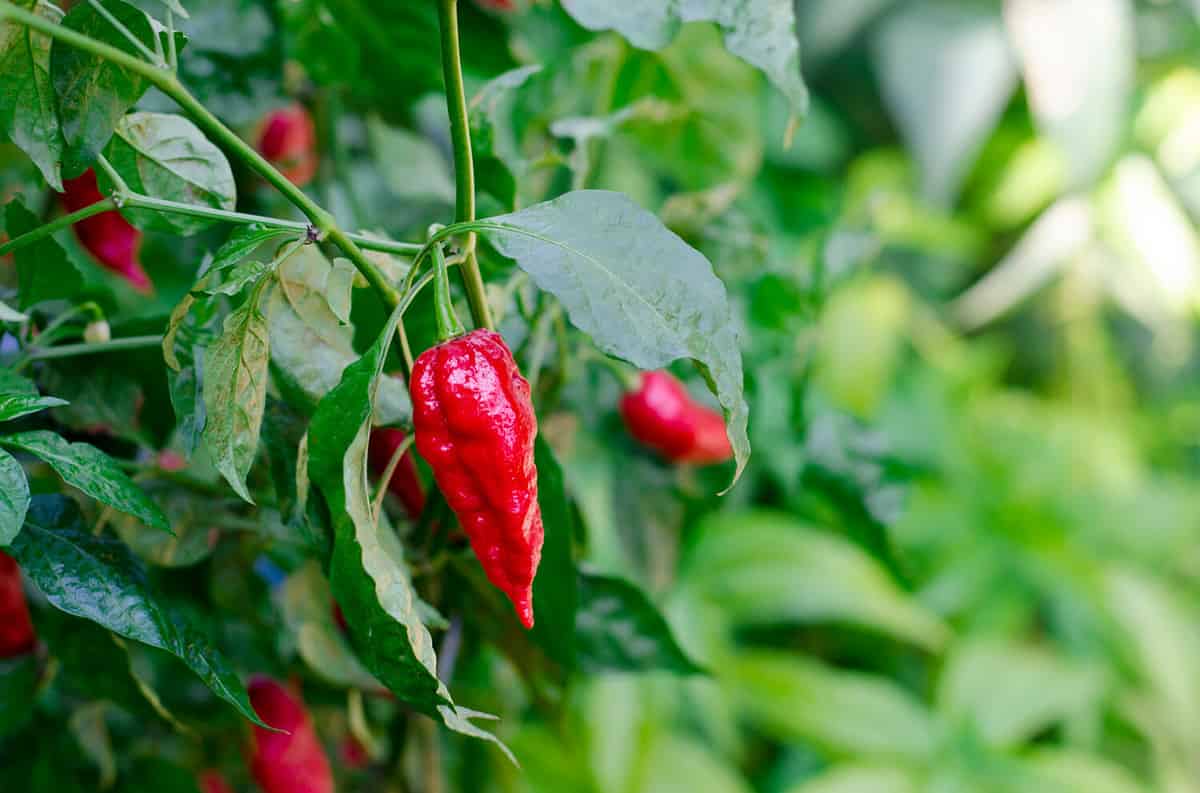
©Pisitphol/Shutterstock.com
Carolina Reapers
Their name evokes a sense of dread, as it should. A 2016 Guardian article reports that consumers have been told to wear gloves when even just handling caroline reapers. Remember the Scoville scale? Carolina reapers average about 1.6 million SHU. The brain cannot comprehend this level of heat. Really though, when an NPR reporter tasted just a piece of the Carolina reaper back in 2011, he actually hallucinated. The brain literally cannot comprehend this level of spice.
Truly, Carolina reapers are not meant to be enjoyed so much as marveled at. They were bred specifically to achieve the status of the hottest pepper on record. Ed Currie, an entrepreneur and pepper breeder living in South Carolina, is responsible for the creation of the Carolina reaper.
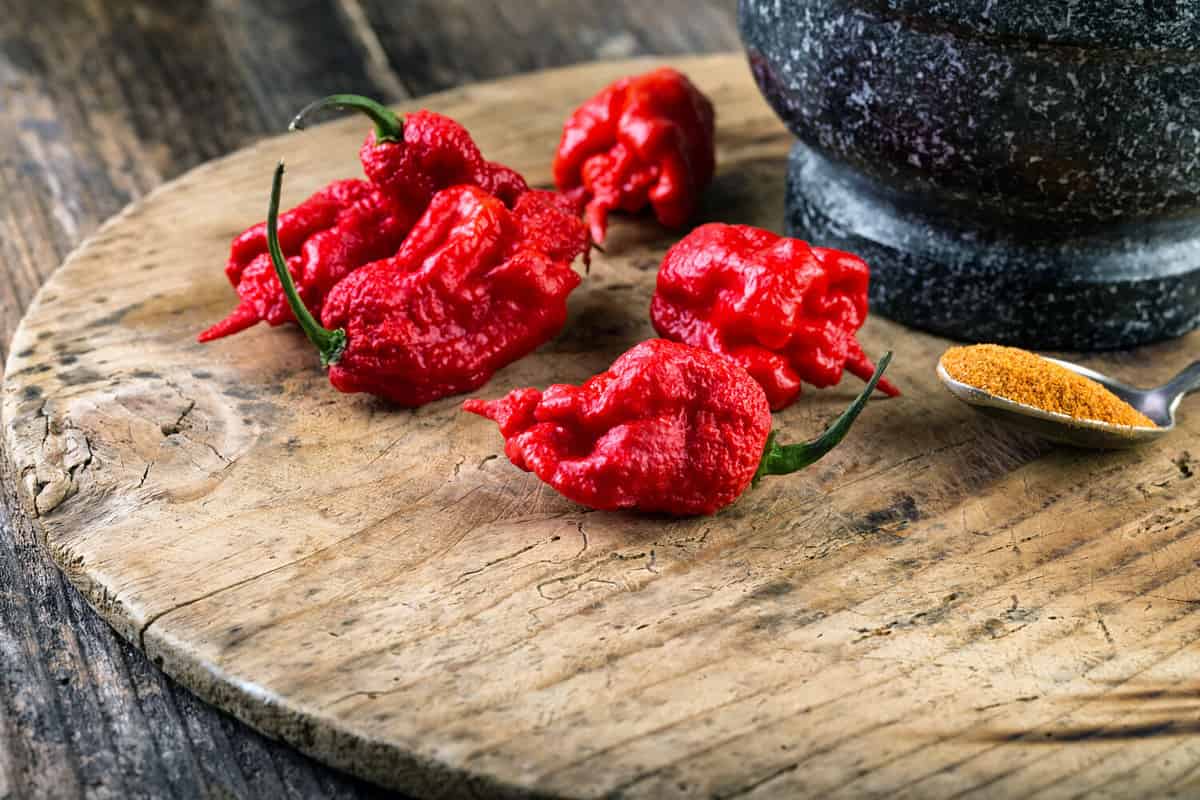
©Adrian_am13/Shutterstock.com
Ghost Pepper vs. Carolina Reaper: Key Differences
Cultivation
One of the main differences in ghost peppers vs. Carolina reapers is how they came to be.
Ghost peppers were bred between two pepper varieties in the same region of Northeast India. Their existence is somewhat natural, but they were definitely helped along by human intervention.
Carolina reapers were also bred, but they were bred from two pepper varieties on opposite sides of the globe: ghost peppers and habaneros. If not for their creator, Ed Currie, these two varietals would likely have never found each other, even by accident.
- The must-have convenient reference guide for every home cook!
- Includes more than 8,000 substitutions for ingredients, cookware, and techniques.
- Save time and money on by avoiding trips to grab that "missing" ingredient you don't really need.
Spice Level
Another key difference, touched on earlier, is spice level. Carolina reapers are spicier than ghost peppers, mainly because they were bred using ghost peppers, in addition to habaneros.
Flavor
People brave enough to have tried ghost peppers and Carolina reapers have described them as having different flavors. Because the heat of the ghost peppers does not hit the taste buds right away, an initial taste of ghost pepper will taste faintly citrusy, sweet, and even a little smoky. Carolina reapers have a much sweeter flavor, surprisingly. That is, it’s sweet until it starts to burn!
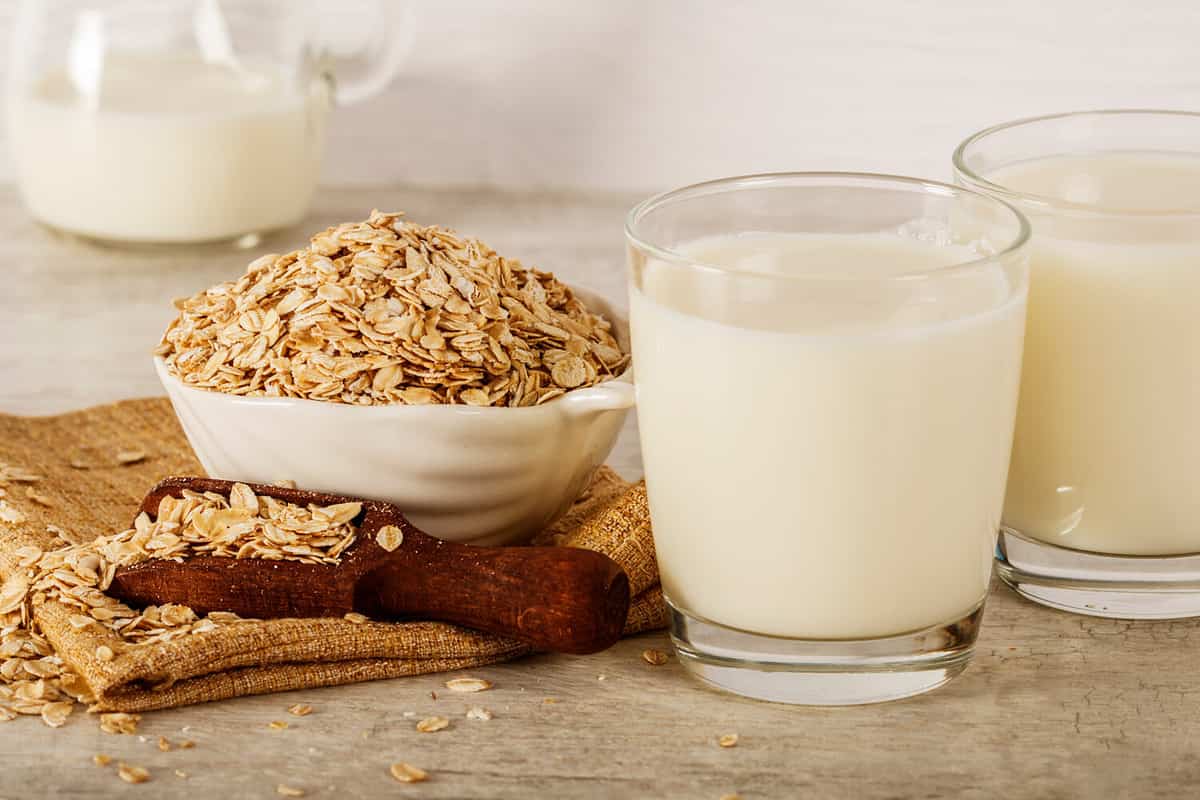
©YuriiVD/Shutterstock.com
Appearance
Lastly, ghost peppers and Carolina reapers can be told apart by their appearance. Both are red and wrinkly, like other chili peppers of the same species. But ghost peppers are shaped more like jalapenos, whereas Carolina reapers have a boxier shape like habaneros, then come to a sharp point, almost like a bumble bee stinger.
If you’re curious enough to try either the ghost pepper or Carolina reaper, I salute you!
Final Thoughts
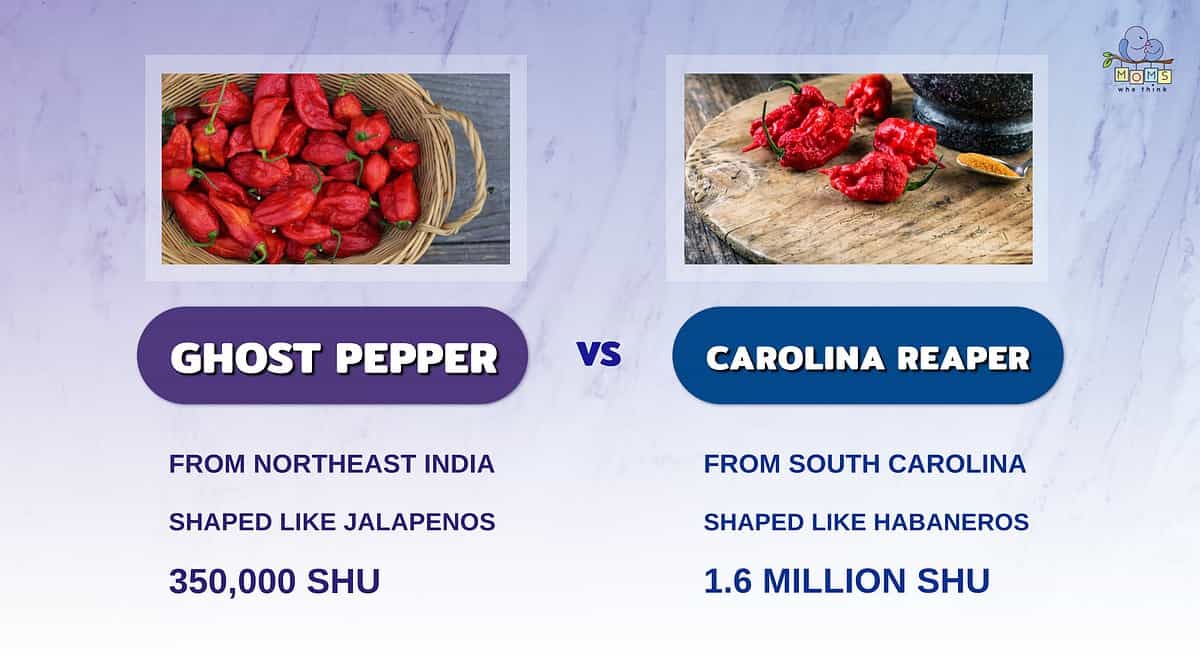
If you are a fan of hot and spicy food, then either of these peppers will give you a run for your money. The Carolina reaper wasn't necessarily created to be enjoyed. It was created to be the hottest pepper. If you do decide to handle these peppers, be sure to take precautions and wear gloves. Don't touch your face and wash your hands afterwards. A few noticeable differences between the two include:
- Ghost peppers have a citrus and sweet taste, and Carolina reapers have a sweeter flavor.
- Carolina reapers are spicier than Ghost peppers.
- Ghost peppers are more natural and come from two different peppers in Northeast India.
- Carolina reapers were created from ghost peppers and habaneros.
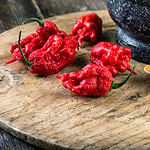
Carolina Reaper Hot Sauce
Description
It's important to use the Carolina Reaper sparingly in recipes to avoid overwhelming heat because it is one of the hottest chili peppers in the world.
Ingredients
- 10–12 Carolina Reaper peppers (use gloves when handling)
- 4 cloves garlic, minced
- 1 medium carrot, peeled and chopped
- 1 medium onion, chopped
- 1 cup distilled white vinegar
- 1/2 cup water
- 1 tablespoon sugar
- 1 teaspoon salt
- Juice of 1 lime (optional, for added flavor)
Instructions
- Wearing gloves, carefully remove the stems and seeds from the Carolina Reaper peppers. The seeds and membranes are where most of the heat resides, so adjust the number of peppers based on your heat tolerance.
- In a saucepan, heat a small amount of oil over medium heat. Add the minced garlic, chopped carrots, and chopped onions. Sauté for about 5-7 minutes until the vegetables start to soften and the onions become translucent.
- Add the Carolina Reaper peppers to the saucepan and continue to cook for another 2-3 minutes, stirring frequently.
- Pour in the vinegar and water, then add the sugar and salt. Stir everything together. Bring the mixture to a simmer, then reduce the heat and let it simmer for about 10-15 minutes, or until the vegetables are very soft.
- Carefully transfer the hot sauce mixture to a blender or food processor. Be cautious of the fumes when blending hot peppers. Blend until the sauce is smooth and no large chunks remain.
- If you want a smoother hot sauce, strain it through a fine-mesh strainer or cheesecloth to remove any remaining solids. Press down on the solids to extract as much liquid as possible.
- Let the Carolina Reaper hot sauce cool to room temperature. If desired, add the juice of one lime for extra flavor and balance. Taste and adjust the seasoning if necessary.
- Pour the hot sauce into clean, airtight bottles or jars. Seal them and refrigerate the sauce. The flavors will meld and intensify over time. It can be stored in the refrigerator for several months.
Safety Note: Be extremely cautious when working with Carolina Reaper peppers or any other extremely hot chili. Wear gloves and avoid touching your face, especially your eyes, after handling them. Proper ventilation is essential when cooking with super-hot peppers to avoid inhaling the spicy fumes, which can be very uncomfortable. Wash your hands thoroughly after handling the peppers.
The image featured at the top of this post is ©Marti157900/ via Getty Images.
- The must-have convenient reference guide for every home cook!
- Includes more than 8,000 substitutions for ingredients, cookware, and techniques.
- Save time and money on by avoiding trips to grab that "missing" ingredient you don't really need.
